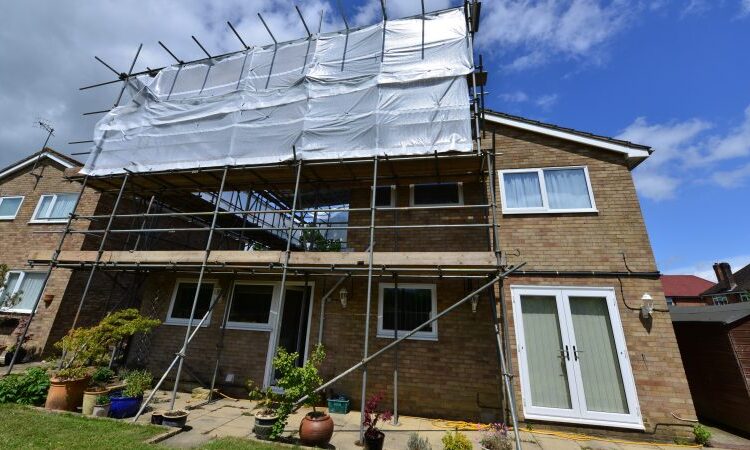
Today, home renovation loans often come at high costs for uncertain results, despite the enormous gains they can offer in terms of energy savings; the time has come to change this and de-risk renovations for homeowners, writes Peter Sweatman.
Peter Sweatman is the Chief Executive of Climate Strategy & Partners. Sweatman launched and led a task group on energy efficiency finance for the G20 and is the rapporteur for the EU Commission and UNEP FI’s Energy Efficiency Financial Institutions Group (EEFIG).
Today, the European Parliament Committee on Industry, Research and Energy voted on their compromise amends to update the EU Energy Performance of Buildings Directive (EPBD).
Saving energy remains the cheapest, safest and cleanest way to reduce our reliance on fossil fuel imports, and make Europe more economically, and politically, resilient. And yet buildings need €275 billion of annual investments annually to be fit for a net-zero and fossil energy-independent future.
In retrospect, 2022 was the year of quick energy savings. The EU member states’ 5% peak-hour energy savings, and voluntary 10% reduction in electricity demand is being achieved and exceeded largely through behaviour change. These quick wins were illustrated by the International Energy Agency (IEA) in nine simple (free) steps that can save 120 super tankers of oil, and gas for 20 million homes.
Yet properly re-powering Europe, and providing sustained energy independence for Russia by 2027, will require hundreds of billions of new investments in efficiency.
While 2022 saw strong increases in the demand for heat pumps and home renovation, the renovation supply chains became tight. For a sustained renovation wave, EU institutions, national governments and lenders need to coordinate, as energy efficiency investment will not “just happen”. Millions of deep renovations a year require an army of trained renovators, and a wall of low-cost money.
Public money is clearly insufficient. Just €25-40 billion is allocated to buildings renovation in National Recovery Plans, and from other public sources. The missing renovation funds need to come from the buildings’ owners they will benefit through a combination of energy savings and increased property value. EU homes are worth €17 trillion in aggregate and have a total of €7 trillion of mortgage debt lent against them. One-fifth of the €10 trillion of home equity needs to be converted into future energy savings through home renovation.
Today, with some exceptions, home renovation loans often come with high interest rates for uncertain results delivered through complex processes. It is time that EU institutions work together with Member States to de-risk renovations for homeowners by offering secure, low interest rates through simple procedures with guaranteed results.
This is why EU Parliamentarians today called for an EU Renovation Loan in their recast EPBD. This new instrument can be quickly launched by combining three existing EU-level tools and could then be offered to millions of homeowners through 138,000 bank branches. The EU Renovation Loan ingredients are: 1) EU guarantee; 2) ECB-liquidity; and 3) a trusted network of accredited renovation project managers.
The EU Renovation Loan could work as follows:
- An EU Guarantee is a cost-efficient way to allow banks to offer EU Renovation Loans to clients who can’t access green mortgages. Older and the working poor homeowners are very vulnerable to energy prices and can’t access or increase their mortgages. An EU guarantee covering deep renovation works would allow them to unlock their home equity cost-effectively to reduce bills and improve accessibility. Further, a zero-coupon structure that allows interest payments to accrue until final maturity (or sale, or transfer) can further improve the cash flow impacts.
- ECB liquidity enables guaranteed low rates, the zero-coupon structure and would incentivise lenders to offer EU Renovation Loans to their clients. As the ECB considers ways to support the green transition and foster climate action, it can tip its open market operations to de-risk building renovation. Energy-efficient homes are more valuable and produce lower defaults and arrears. Targeted longer-term refinancing operations (TLTROs) provide financing to credit institutions at attractive conditions for them to provide favourable borrowing conditions to the real economy. A new TLTRO for EU Renovation Loans would provide a huge boost to renovation lending at rates attractive to homeowners.
- A trained and accredited network of hundreds of thousands of trustworthy project managers is needed to provide millions of high-quality renovations to homeowners and manage performance risks for lenders. The German government, its energy agency (DENA) and public bank (KfW) together manage a national network of 13,000 energy efficiency experts who provide high-quality renovation and co-sign renovation loans providing confidence and traceability for project management. If each expert managed 10 renovations per year, the EU would need 350,000 trained and trusted experts spread over 27 Member States to deliver its target 3.5 million annual renovations.
Sophisticated, retail customer-facing operational experience, networks and systems are required to annually deliver millions of high-quality building renovations. This delivery system must match and process the individual needs of millions of building owners with a financial package and local renovators, allocating risks to the parties responsible for managing them, and meeting required service levels and performance. These skills and systems are the backbone of retail finance, and boosted by the rise of fintech.
Buildings renovation cannot be delivered at scale until their supply chains are mature and delivered at massive retail-service efficiency. In the finance world, this can be provided by retail-facing financial institutions, but they will need the guaranteed support and incentives of a newly designed EU Renovation Loan to invest in developing and serving this critical market. Today’s ITRE vote is a milestone on that journey, but there is more work still to be done.






